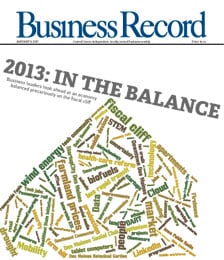Economist vs. stimulus

.floatimg-left-hort { float:left; } .floatimg-left-caption-hort { float:left; margin-bottom:10px; width:300px; margin-right:10px; clear:left;} .floatimg-left-vert { float:left; margin-top:10px; margin-right:15px; width:200px;} .floatimg-left-caption-vert { float:left; margin-right:10px; margin-bottom:10px; font-size: 12px; width:200px;} .floatimg-right-hort { float:right; margin-top:10px; margin-left:10px; margin-bottom:10px; width: 300px;} .floatimg-right-caption-hort { float:left; margin-right:10px; margin-bottom:10px; width: 300px; font-size: 12px; } .floatimg-right-vert { float:right; margin-top:10px; margin-left:10px; margin-bottom:10px; width: 200px;} .floatimg-right-caption-vert { float:left; margin-right:10px; margin-bottom:10px; width: 200px; font-size: 12px; } .floatimgright-sidebar { float:right; margin-top:10px; margin-left:10px; margin-bottom:10px; width: 200px; border-top-style: double; border-top-color: black; border-bottom-style: double; border-bottom-color: black;} .floatimgright-sidebar p { line-height: 115%; text-indent: 10px; } .floatimgright-sidebar h4 { font-variant:small-caps; } .pullquote { float:right; margin-top:10px; margin-left:10px; margin-bottom:10px; width: 150px; background: url(http://www.dmbusinessdaily.com/DAILY/editorial/extras/closequote.gif) no-repeat bottom right !important ; line-height: 150%; font-size: 125%; border-top: 1px solid; border-bottom: 1px solid;} .floatvidleft { float:left; margin-bottom:10px; width:325px; margin-right:10px; clear:left;} .floatvidright { float:right; margin-bottom:10px; width:325px; margin-right:10px; clear:left;}
Ernie Goss thinks you have been economically stimulated quite enough. What we need now, in his opinion, is more investment by businesses – but he knows that’s a lot to ask for in the midst of all this uncertainty.
Goss is an often-quoted economist at Creighton University, and he drove over from Omaha last week to speak at the 13th annual Iowa Commercial Real Estate Expo.
Commercial real estate is a subdued and nervous sector right now, sort of like the next person in line at an amateur cliff-diving event. Goss didn’t exactly tell the assembled brokers that they could forget the cliff and go sit by the pool. The closest he came to a pep talk was to say that he’s “reasonably pessimistic” about the Midwest’s prospects.
“I don’t agree that the next crash will be in commercial real estate,” Goss said. “Default rates are going to go up, but things are going to hold up better here.”
Hooray.
However, Goss sees better days ahead for agriculture, which would be a good thing for Iowa business in general. “In China and India, the world’s fastest-growing economies, they’re at the point where the demand for food grows faster than income,” he said.
They’re living better, and now they want to eat better. That should help anybody who produces corn, soybeans, cattle or hogs.
One might question whether the link between combines and commercial real estate is as direct as it once was. We have almost as much farmland as ever but fewer farmers every year, which means fewer customers for many of the businesses occupying storefronts across the state. But commodities do carry some clout, and Goss seemed to think his Iowa audience should cheer for ag exports with both lungs.
What Iowans should want, he said, is a weaker dollar. Unfortunately, “a weaker dollar hurts Wall Street,” he noted, “and they have a stronger voice than farmers.”
Goss also was sorry to see President Obama slap a tariff on Chinese tires. “Protectionism is rearing its ugly head,” he said. “Other countries will retaliate, and one of the first things to be affected will be food.”
But if you’re weary of worrying about such things, Goss suggested a diversion. “We should be trying to figure out where the next bubble will be,” he said. OK, “diversion” might be the wrong word.
“We can’t spend this much, keep interest rates at zero to a quarter percent and not have a bubble,” said Goss. If former Federal Reserve chairman Alan Greenspan was wrong, current chair Ben Bernanke is “four times as wrong,” in Goss’ opinion.
There’s talk of a second stimulus package. Goss signed a petition opposing the first package, and he’s not switching sides now. He figures the housing sector presented us with a $450 billion problem, and the government has managed to compound it.
His recommendations: Make permanent the 2001 and 2003 tax cuts on dividends and capital gains; reduce government spending to less than 20 percent of the gross domestic product; do not lift the cap on wages subject to Social Security taxes; do not artificially prop up the dollar; and, of course, do not crank out another stimulus package.
So did the gloomy Goss have anything positive to share? Sure.
He thinks stock prices could and should move higher, fueled by the global business operations of many U.S. corporations, because other nations are ahead of us in the recovery process. He thinks the Standard & Poor’s 500 index will rise “more than 20 percent over the next two years.”
If you can get a loan, Goss advises you to do so and buy something. A house, some stocks, durable goods. Instead, people are afraid and uncertain, so they’re basically waiting for prices to rise before jumping in.
“People want to buy high and sell higher,” Goss said. “If you’re thinking about holding a home for four or five years, this is a wonderful time to be buying.
“If the bank is lending, I’m borrowing.”






